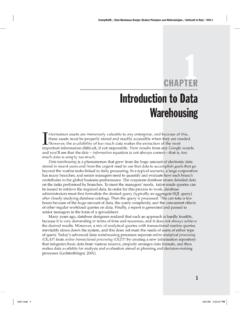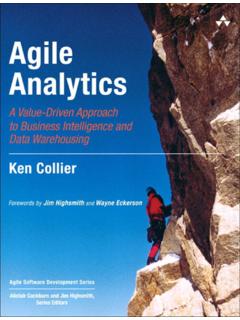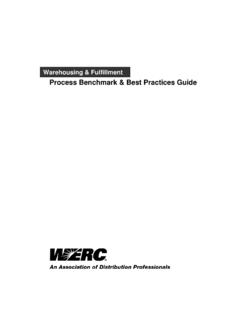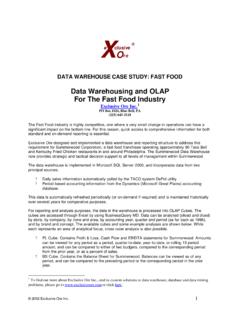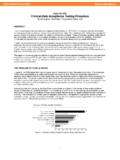Transcription of About the Tutorial - Current Affairs 2018, Apache Commons ...
1 data mining i About the Tutorial data mining is defined as the procedure of extracting information from huge sets of data . In other words, we can say that data mining is mining knowledge from data . The Tutorial starts off with a basic overview and the terminologies involved in data mining and then gradually moves on to cover topics such as knowledge discovery, query language, classification and prediction, decision tree induction, cluster analysis, and how to mine the Web. Audience This Tutorial has been prepared for computer science graduates to help them understand the basic-to-advanced concepts related to data mining . Prerequisites Before proceeding with this Tutorial , you should have an understanding of the basic database concepts such as schema, ER model, Structured Query language and a basic knowledge of data Warehousing concepts.
2 Copyright & Disclaimer Copyright 2014 by Tutorials Point (I) Pvt. Ltd. All the content and graphics published in this e-book are the property of Tutorials Point (I) Pvt. Ltd. The user of this e-book is prohibited to reuse, retain, copy, distribute or republish any contents or a part of contents of this e-book in any manner without written consent of the publisher. We strive to update the contents of our website and tutorials as timely and as precisely as possible, however, the contents may contain inaccuracies or errors. Tutorials Point (I) Pvt. Ltd. provides no guarantee regarding the accuracy, timeliness or completeness of our website or its contents including this Tutorial . If you discover any errors on our website or in this Tutorial .
3 Please notify us at data mining ii Table of Contents About the Tutorial i Audience i Prerequisites i Copyright & Disclaimer i Table of Contents ii 1.
4 data mining OVERVIEW 1 What is data mining ? 1 data mining Applications 1 Market Analysis and Management 1 Corporate Analysis and Risk Management 2 Fraud Detection 2 2.
5 data mining TASKS 3 Descriptive Function 3 Classification and Prediction 4 data mining Task Primitives 5 3. data mining ISSUES 7 mining Methodology and User Interaction Issues 7 Performance Issues 8 Diverse data Types Issues 8 4.
6 data mining EVALUATION 9 data Warehouse 9 data Warehousing 9 Query-Driven Approach 9 Update-Driven Approach 10 data mining iii From data Warehousing (OLAP) to data mining (OLAM) 10 Importance of OLAM 11 5.
7 data mining TERMINOLOGIES 13 data mining 13 data mining Engine 13 Knowledge Base 13 Knowledge Discovery 13 User Interface 14 data Integration 14 data Cleaning 14 data Selection 14 Clusters 14
8 data Transformation 15 6. data mining KNOWLEDGE DISCOVERY 16 What is Knowledge Discovery? 16 7. data mining SYSTEMS 17 data mining System Classification 17 Integrating a data mining System with a DB/DW System 19 8.
9 data mining QUERY LANGUAGE 20 Syntax for Task-Relevant data Specification 20 Syntax for Specifying the Kind of Knowledge 20 Syntax for Concept Hierarchy Specification 22 Syntax for Interestingness Measures Specification 23 Syntax for Pattern Presentation and Visualization Specification 23 Full Specification of DMQL 23 data mining iv data mining Languages Standardization 24 9.
10 data mining CLASSIFICATION AND PREDICTION 25 What is Classification? 25 What is Prediction? 25 How Does Classification Work? 25 Classification and Prediction Issues 27 Comparison of Classification and Prediction Methods 27 10.










